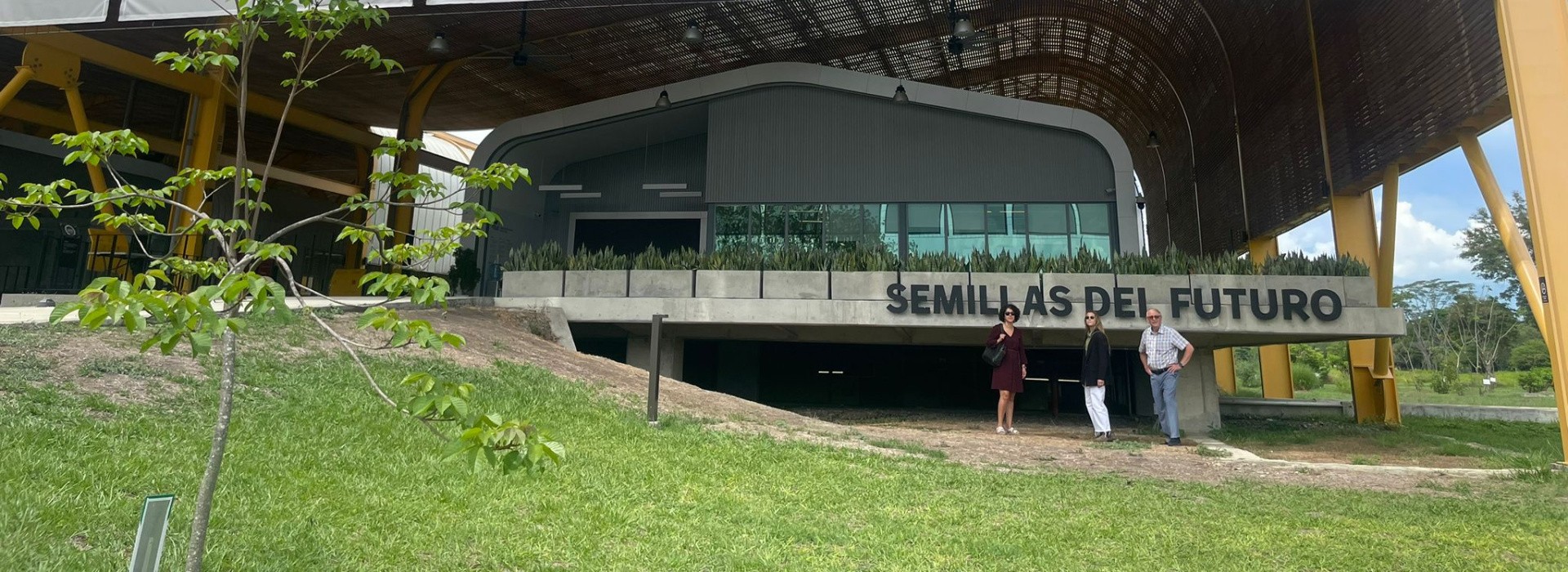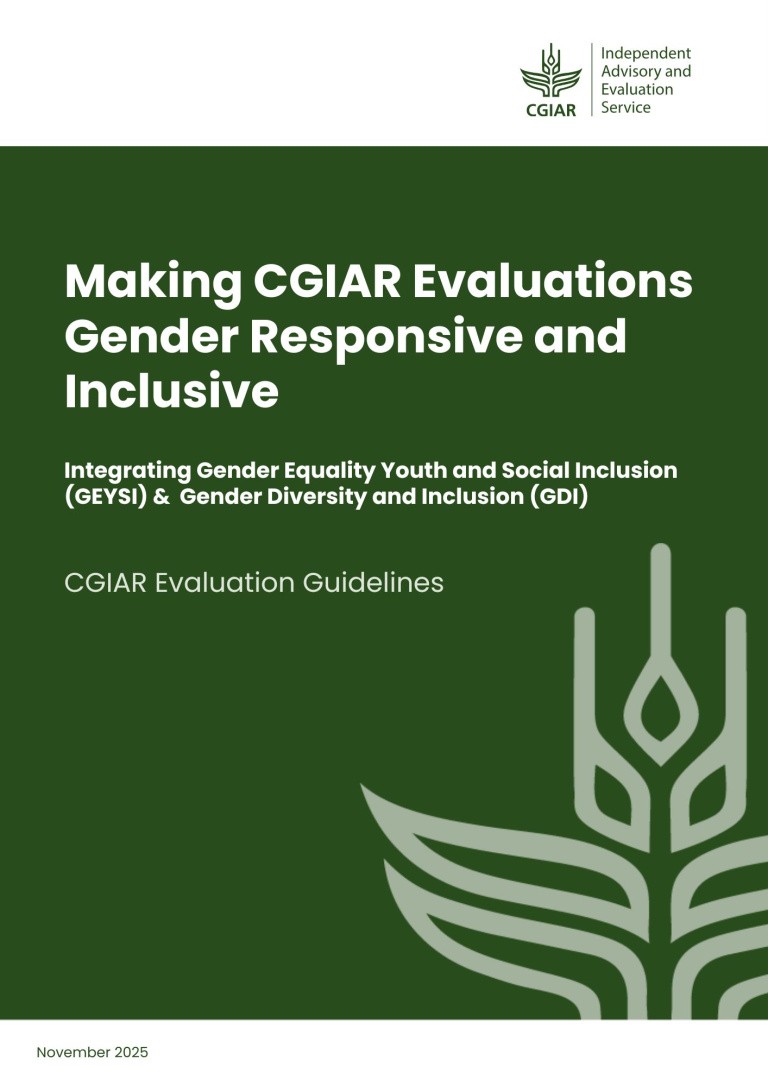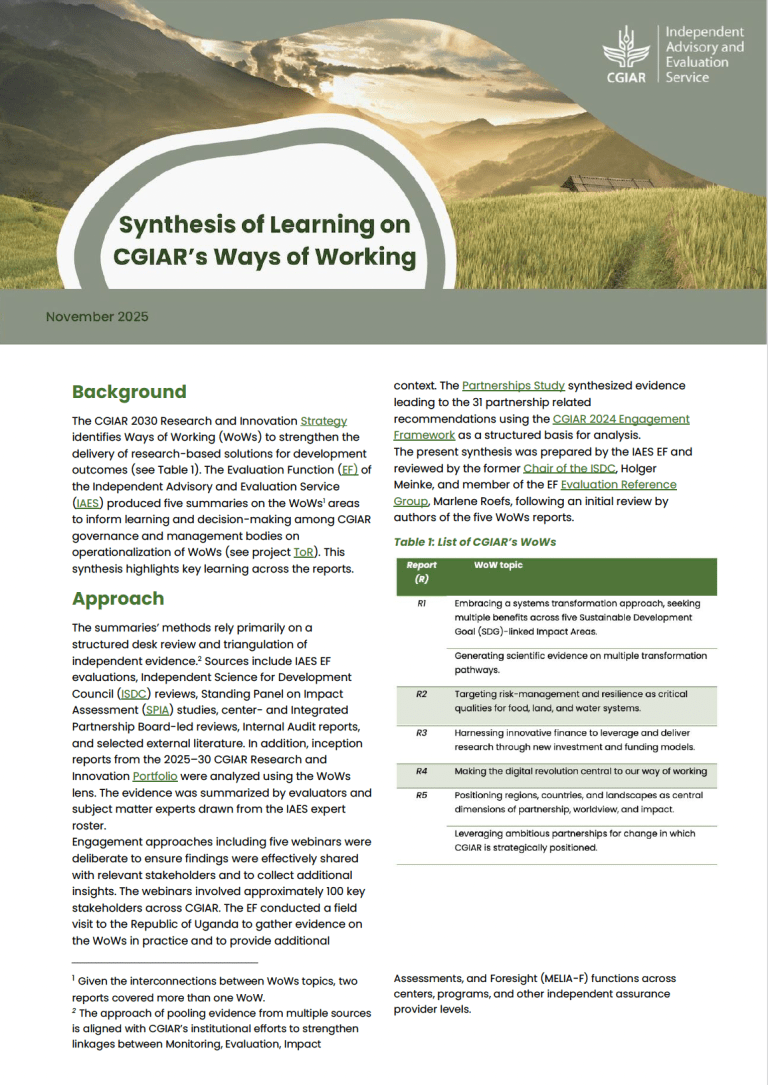This article is also available in Spanish.
As part of the CGIAR Science Group (SG) Evaluations, Dr. Craig Meisner, Expert Agronomist, Ibtissem Jouini, Senior Evaluation Manager, and Marta Maria Molinari, Research Analyst, returned from a field trip to Colombia where they interviewed numerous stakeholders as part of their evaluation. In this edited transcript, they discuss their reflections with science journalist Alan Dove.
Alan Dove (AD): Let’s start by putting this trip into the broader context of the other field trips IAES Evaluation Function was conducting. How was this one planned, and what were you seeking to evaluate?
Ibtissem Jouini (IJ): There are three major evaluations ongoing right now, covering the three action areas of Genetic Innovation, Systems Transformation, and Resilient Agrifood Systems (RAFS). The evaluation methodology uses a wide range of data collection methods, and field trips were meant to deep dive into CGIAR work at a country level, bringing insights from those who work on the field as well as CGIAR national partners. We were fortunate because we were able to meet a wide range of stakeholders such as National Agricultural Research and Extension Systems (NARES), private sector companies, Non-profit organizations as well as CGIAR staff working in Cali. Then we complemented our data collection work in Colombia through remote interviews, especially with a few farmers located in other areas where we were not able to go. Finally, it was an exciting moment when Natalia Ortiz Escobar, walked us through the facilities of the Alliance center in Cali, especially the newly built genebank.
Marta Maria Molinari (MMM): We spent three days in Cali and three days in Bogotá, where we had the opportunity to hear different opinions and perspectives on a set of pre-defined topics to understand the extent to which SG work through its initiatives and work packages have been effective in reaching the planned objectives. For example, with external partners, the focus of the discussion was more about the quality of collaboration, added value, comparative advantage, communication, what types of results they reached by collaborating with CGIAR, and to what extent their expectations from the collaboration have been met.
IJ: I want to stress that this was not an evaluation of the centers involved in the implementation of SG work. It was a challenge for us to emphasize that enough in our meetings with national partners, because the Alliance mostly known as CIAT in Colombia was and still very popular and famous in the country. When we met with partners, they all mentioned CIAT when they talked about CGIAR’s work under the framework of initiatives and work packages.
AD: You mentioned the added value and comparative advantage partners perceive in collaborating with CGIAR centers. What feedback did you get on those topics?
Craig Meisner (CM): The topic that generated the most discussion with the external partners was a question about whether the research done with CGIAR was producing outcomes and outputs that were relevant in the country. It’s difficult when talking of science, of course, but especially for the private partners we interviewed, they put most of the attention on the fact that sometimes the focus is more on controlled trials, and less on what the farmers can then really take away from the results.
IJ: Yes, and there are different views among partners about how to handle that. It’s not that they all thought CGIAR should do scaling and implementation. Some said they should build partnerships with others who know better how to work with farmers, because CGIAR cannot necessarily do the science and scale it up. So everyone said scaling was very important for them, but they had mixed views on how this should be done.
MMM: Something else on value is that CGIAR in general has really good credibility at the international level. Something that was repeated by different interviewees was that the value of working with CGIAR is to be always aware of what is the international perspective. So when they work with CGIAR, they gain the credibility of working to international standards.

CM: At the same time, collaborating with CGIAR in recent years is seen as more expensive, because of the need to pay international wages and CGIAR overhead. Even CGIAR scientists agreed they have less comparative advantage because of their additional costs under the initiatives. The additional layer of bureaucracy was also seen as a challenge by the scientists.
AD: How about the results achieved under the initiatives?
IJ: The CGIAR is currently designing the 2025-30 Portfolio, but we talked about the results achieved and the challenges of implementing the current 3-year initiatives. We wanted their insights on what worked well with the design of the P22 portfolio, what initiatives were set up, and what was successful and not successful. Of course, all of them talked about the problems of budget cuts, but they think overall that the initiative set up brought better coordination mechanisms for centers to work together. Each initiative had two or three centers collaborating to implement a work package, so this setup encouraged cross-center collaboration between scientists, and also across topics and even across continents. However, some participants questioned whether international centers operating under CGIAR should be competing for national-level funding sources.
AD: What about the structures of the partnerships? Were people satisfied with the way collaborations were set up and what they got out of them?
IJ: The Alliance has a privileged relationship with the Colombian Ministry of Agriculture, so partners appreciate the center’s ability to link them to the Ministry. They had mixed opinions about the extent to which they got what they expected from their partnerships. As we mentioned, the access to international-level research with high credibility was appreciated, but some complained that CGIAR and their initiatives took a top-down approach that seemed to work in silos. Partners also have high expectations for the initiatives, but perceive them as sometimes having a late start and less funding that expected with no clear indication on the continuity of work.
MMM: This also touches on the issue of communication; partners said they often work in informal networks. The network of people working on agricultural research in one country is small, usually, they go to the same university, so they know each other. They often spent some time at CGIAR and then went to work for a partner, so it’s the same people going around. In many cases, individual relationships are driving the partnerships. One funder said he doesn’t worry about reporting, because he spent time with CGIAR, he knows the people, he knows exactly what they’re doing, so it’s a collaboration based primarily on trust.

CM: It’s double-edged, though, because having a partnership that depends on a personal relationship means that when that person goes away to another place or retires, the partnership might end.
IJ: One point that came up was that the initiative design was very fast, and there was a rush to develop initiatives, which didn’t help with building strong links between initiatives and work packages. They also said the consultation process with external partners wasn’t always deep enough.
AD: Gender is another important area of emphasis for CGIAR. How are the initiatives doing there?
CM: While gender strategies are generally not a high priority for consulted partners, they view CGIAR as having a strong gender focus, noting that CGIAR’s scientists are equally represented by men and women. I went through the publications and found that there is a good balance of authors in terms of gender, so that may confirm that perception of CGIAR. On the other hand, a few interviewees said that they think gender is the first thing to be dropped when there is a budget cut. That’s something we’ve heard in other initiatives across the three Science groups as well.
AD: Finally, what were the top recommendations from interviewees?
IJ: Several recommendations were expressed during our exchanges, to cite some, from partners’ perspective, they would like to continue, and scale successful collaborations, a more collegial relationship with CGIAR staff, and more responsiveness to farmers’ needs. On CGIAR stakeholders’ side, they would love P2025-30 drafters and management to be more realistic in setting objectives for new work streams, both in terms of time and resources, and to improve the retention rate of scientists.



